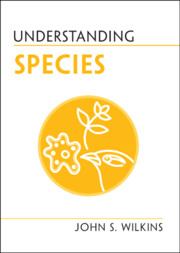Book contents
- Understanding Species
- Understanding Life
- Understanding Species
- Copyright page
- Reviews
- Contents
- Foreword
- Preface
- A Note
- 1 How Species Matter
- 2 Classifying Species
- 3 Making Species
- 4 A Short History of Species and Kinds
- 5 Philosophy and Species
- 6 Finding Species
- 7 Extinction, or How Species Are Lost
- 8 The Value of Species
- 9 Replacing ‘Species’
- 10 Concluding Remarks
- Summary of Common Misunderstandings
- References and Further Reading
- Figure Credits
- Index
3 - Making Species
Published online by Cambridge University Press: 06 April 2023
- Understanding Species
- Understanding Life
- Understanding Species
- Copyright page
- Reviews
- Contents
- Foreword
- Preface
- A Note
- 1 How Species Matter
- 2 Classifying Species
- 3 Making Species
- 4 A Short History of Species and Kinds
- 5 Philosophy and Species
- 6 Finding Species
- 7 Extinction, or How Species Are Lost
- 8 The Value of Species
- 9 Replacing ‘Species’
- 10 Concluding Remarks
- Summary of Common Misunderstandings
- References and Further Reading
- Figure Credits
- Index
Summary
Every textbook of biology will supply a number of ‘modes of speciation’, the ways in which new species evolve. But the issues in dispute among the biologists themselves are rather odd. The adoption of evolutionary theory by biologists has had a great impact on how species are understood. From the idea that kinds of living beings were created and at best had devolved to localised varieties, now species were the target of a ‘mechanical’ or ‘physiological’ explanation: they came into being. And under Darwin’s version of the evolutionary account (initially known as the ‘development theory’, since the Latin word evolutio means ‘development’), species were made from other, allied (which means ‘closely related’), species. The processes and causes of new species set up the ‘species question’ that Darwin and other naturalists were seeking to answer.
Keywords
- Type
- Chapter
- Information
- Understanding Species , pp. 35 - 56Publisher: Cambridge University PressPrint publication year: 2023

